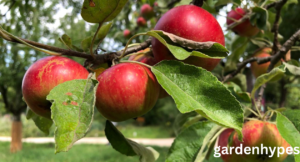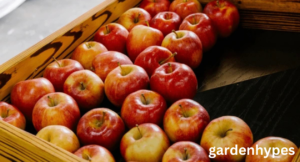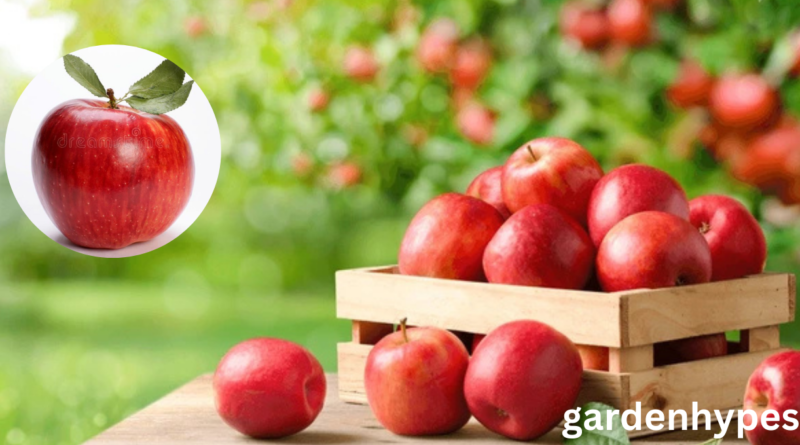Apple Season When Nature’s Sweetest Gift Arrives
Apple season is more than just a time to enjoy a crisp bite of a fresh fruit. It’s a celebration of nature’s bounty, a signal of changing weather, and a tradition that has been cherished for centuries. As the days start to shorten and a gentle chill creeps into the air, apple orchards across the globe begin to brim with color. From bright greens to deep ruby reds, apples paint the landscape with their tempting hues. Whether you’re someone who eagerly awaits the first batch of cider, loves baking apple pies, or simply enjoys the sound of that first crunchy bite, apple season has something magical for everyone.
click in link green apple varieties
Understanding Apple Season
What is Apple Season?
Apple season refers to the period when apples ripen and are ready for harvest. In most regions of the Northern Hemisphere, this occurs between late summer and late autumn, typically from August to November. However, the exact timing depends on the variety of apple and the climate of the growing region. Some apple varieties ripen early and are available as soon as mid-August, while others take their time and don’t reach peak flavor until late October.
Why Apple Season Varies by Region
Not every orchard experiences apple season at the same time. In warmer areas, apples ripen sooner because the trees receive more sunlight and warmth earlier in the year. In cooler climates, the process takes longer, allowing the apples to develop richer flavors over time. This is why a Honeycrisp grown in Washington may be ready weeks earlier than the same variety grown in Maine.
Climate’s Role in Apple Harvest Times
Climate is one of the biggest factors in determining apple season. Apples need a mix of warm days and cool nights to develop their ideal sweetness and crispness. Too much heat can cause them to ripen too fast, losing flavor and texture, while too much cold too early can stop them from developing properly. Rainfall, frost patterns, and even the number of sunny days all influence when apple season peaks in a specific location.
The History of Apple Cultivation
Ancient Origins of Apples
Apples are among the oldest cultivated fruits in the world, with a history stretching back thousands of years. They are believed to have originated in the mountains of Central Asia, specifically Kazakhstan, where wild apple forests still grow today. From there, traders carried them along ancient trade routes, spreading apple seeds to Europe, the Middle East, and beyond.
Apples in American Farming Traditions
Apples arrived in North America with European settlers in the 1600s. Early colonists planted orchards not just for fresh eating but for producing cider, which was a common beverage at the time. Over the centuries, apples became a symbol of American farming, with hundreds of varieties being cultivated for different tastes and uses.
click in link green apple varieties

The Modern Apple Industry
Today, apple cultivation is a global industry, with top producers including China, the United States, and Poland. Modern farming techniques, controlled storage environments, and transportation networks allow us to enjoy apples almost year-round. However, there’s still something special about eating apples fresh from the orchard during peak season—an experience that even the best supermarket apple can’t match.
Best Times to Pick Apples
Early, Mid, and Late Season Varieties
Apple varieties ripen at different times. Early-season apples like Lodi and Ginger Gold are ready by August and have a bright, tart flavor. Mid-season favorites such as Gala and Honeycrisp peak in September, offering a perfect balance of sweetness and crispness. Late-season varieties like Fuji and Granny Smith ripen in October and can be stored for months without losing quality.
How to Tell When Apples Are Ready
The easiest way to know if an apple is ripe is to taste it—but there are also visual clues. A ripe apple will have a rich, even color, feel firm in your hand, and come off the branch with a gentle twist. The seeds inside will turn from white to brown, another sign of maturity.
Factors That Affect Ripeness
Temperature swings, soil quality, and pruning practices all impact how and when apples ripen. Apples exposed to more sunlight tend to ripen faster, while shaded fruit takes longer. Weather events such as late frosts or heavy rain can also influence the timing of harvest.
Popular Apple Varieties by Season
Early Season Apples
Early-season apples are usually crisp and tart, perfect for fresh eating. Lodi, Paula Red, and Ginger Gold are examples that shine in late summer. They may not store as long as other varieties, but their refreshing taste is worth enjoying right away.
Mid-Season Favorites
Gala, Cortland, and the famous Honeycrisp dominate orchards in September. These apples have a beautiful balance of sweetness and acidity, making them ideal for eating raw, adding to salads, or baking into pies.
click in link green apple varieties
Late-Season Classics
Fuji, Granny Smith, and Braeburn come into their prime in October. These apples often have a denser texture and can last in storage for months, making them perfect for winter recipes and long-term use.
Apple Picking Tips for Families
Choosing the Right Orchard
When planning an apple-picking trip, look for orchards that offer a variety of apples, so you can taste and compare. Some orchards also have petting zoos, hayrides, or picnic areas, making the day more enjoyable for kids.
Picking Without Damaging the Tree
To pick an apple without harming the branch, lift it upward and twist gently until it comes free. Avoid yanking or pulling, as this can damage next year’s buds.

Fun Orchard Activities
Beyond picking apples, many orchards offer corn mazes, pumpkin patches, and cider tastings. These activities turn a simple fruit-picking trip into a full day of autumn fun.
FAQs
- When is apple season in the USA?
Apple season in the United States generally runs from late August to early November, depending on the region and the variety of apple. Warmer climates tend to start earlier, while cooler northern areas peak later in the fall. - Which month is best for apple picking?
If you want the widest variety, September is usually the sweet spot. Early-season apples are still available, and mid-season favorites like Honeycrisp, Gala, and Cortland are at their peak. - How can I tell if an apple is ripe?
A ripe apple will have rich color, feel firm to the touch, and come off the branch with a gentle twist. The seeds inside should be brown, and the apple should taste sweet or tangy, depending on the variety. - What are the best apples for baking?
Granny Smith, Honeycrisp, Braeburn, and Jonagold are excellent choices for baking. They hold their shape well and balance sweetness with tartness, making them perfect for pies and crisps. - Can apples be stored after picking?
Yes! Many varieties, especially late-season apples like Fuji and Granny Smith, can last for months if kept in a cool, dark place. For even longer storage, refrigerate them in a perforated bag to maintain freshness.
